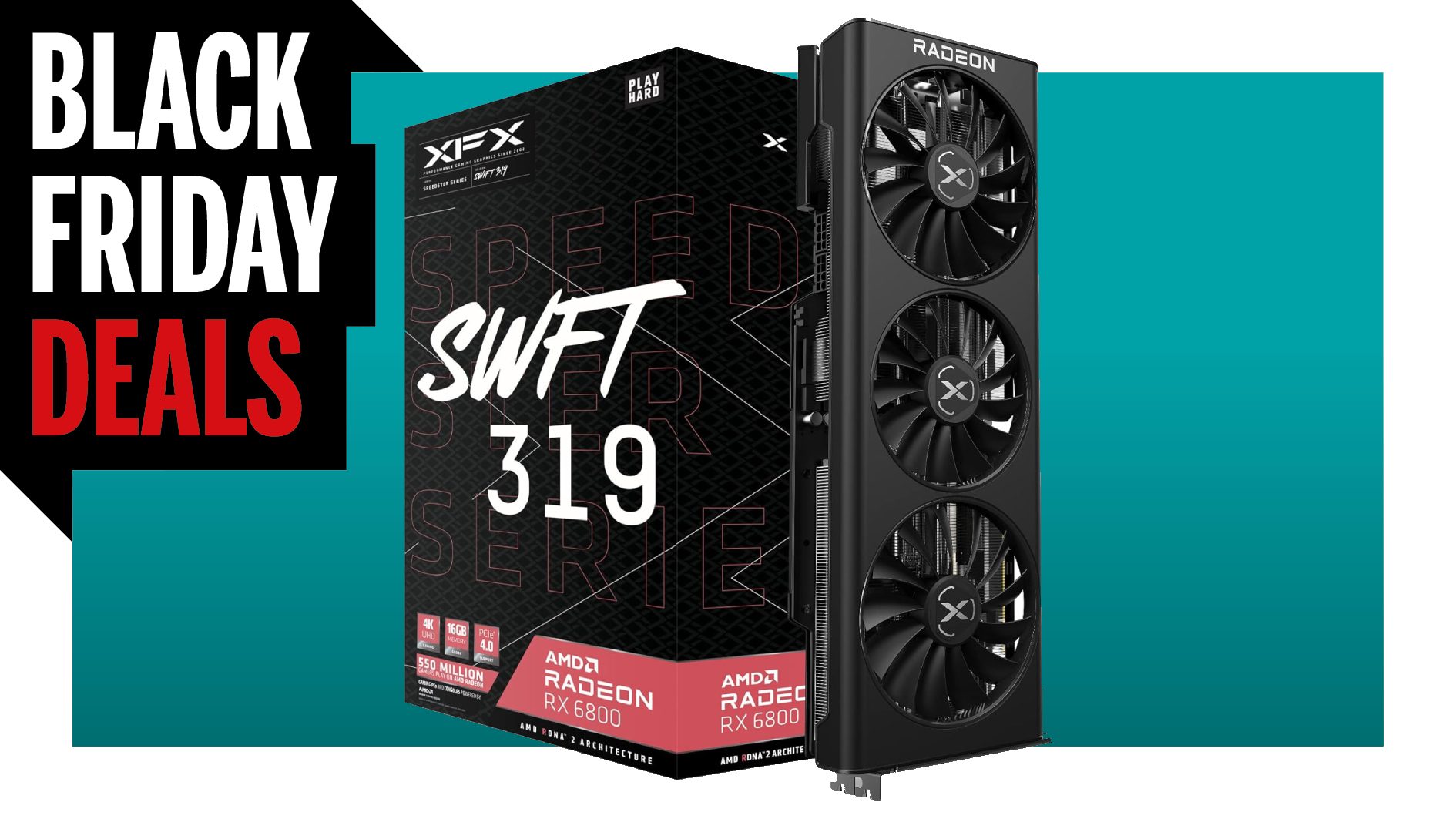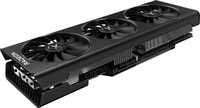A 16GB RX 6800 or an 8GB RTX 4060 Ti for under $370 this Black Friday? For us it's a no-brainer
AMD's last-gen flagship GPU die dips down to $369.99 while Nvidia's RTX 4060 Ti hits $359.99. But there's only one winner for us.

- XFX SPEEDSTER RX 6800 | 16GB GDDR6 | 3,840 shaders |
$459.99$369.99 - PNY Verto RTX 4060 Ti | 8GB GDDR6 | 4,352 shaders |
$379.99$364.99
The cheapest version of a high end GPU is often where the best pixel-pumping value is to be had. Give it up, therefore, for the XFX Speedster SWFT319 Radeon RX 6800, yours for a piffling $369 from Amazon.
Lest you have forgotten, the plain vanilla AMD Radeon RX 6800 launched almost exactly three years ago, along with other members of the AMD RDNA family, with a list price of precisely $579.
Of course, a perfect storm of crypto madness and pandemic-fuelled stay-at-home demand drove prices to as much as three times that level at one point. So, this new lowest-ever sticker of well under $400 is a deal by any reasonable measure.
XFX SPEEDSTER RX 6800 | 16GB GDDR6 | 3,840 shaders | 2,105MHz boost | $459.99 $369.99 at Amazon (save $90)
A Radeon RX 6800 vanilla for $400? Get. Out. People were paying four of five times this much for one of these during the height of the pandemic and crypto craze. This 16GB, 256-bit or a pathetic 128-bit 8GB RTX 4060 Ti for around the same price? Forget it.
RX 6800 price check: $552.99 Walmart | $389.99 Newegg
PNY Verto RTX 4060 Ti | 8GB GDDR6 | 4,352 shaders | 2,565MHz boost | $379.99 $364.99 at Newegg (save $15)
The RTX 4060 Ti started out life as an over-priced $399 GPU that was only able to beat the RTX 3060 Ti by less than 20% in gaming performance, and couldn't match the old RTX 3070. Now it's price is tumbling it's a more tempting offer, but only thanks to DLSS 3.5 and Frame Generation, otherwise older AMD cards still have something tangible to offer for the same money.
RTX 4060 Ti price check: Amazon $369.99 | B&H Photo $369.99
For your money you get cut-down version of the same excellent Navi 21 chip found in the pricier RX 6800 XT, RX 6900 XT and RX 6950 XT cards. For the RX 6800, it's running 3,840 shaders and sports 16GB of GDDR6 memory via a 256-bit bus.
So, you're sidestepping any issues involving memory capacity and bandwidth on newer GPUs with 8GB and even 12GB of VRAM. For plain raster performance, it spanks the $360 Nvidia RTX 4060 Ti and even with ray-tracing enabled it has the edge in most games and settings.
The obvious AMD comparison is the new AMD RX 7700 XT, which is almost $100 more expensive. There, the RX 6800 is occasionally a little slower, but can also be faster, especially at higher resolutions of 1440p and beyond. It's that wider memory bus and additional VRAM doing its thing.
- We're curating all the best Black Friday PC gaming deals right here.
You could argue that RDNA 2 tech is pretty old hat, what with RDNA 3 GPUs like the RX 7900 XT and XTX cards having been around for a year. But the thing is, in rendering tech terms, RDNA 3 isn't much of a step forward. Like for like, it only advanced AMD's ray-tracing performance by a whisker. And when it comes to features like FSR support, RDNA 2 and RDNA 3 are very similar.
So, it really is a case of weighing up straight performance when it comes to comparing this RX 6800 with the newer RX 7700 XT. You're not missing out on any really relevant hot new tech. Yes, the RX 7700 XT is a chiplet design. But that's more about manufacturing costs than rendering tech.
And as a long term buy, this high-end card with its wide memory bus and ample VRAM allocation will likely hold up better in future than a card with less VRAM and a narrower memory bus. If there's a better sub-$400 option right now, we haven't seen it.
Keep up to date with the most important stories and the best deals, as picked by the PC Gamer team.

Jeremy has been writing about technology and PCs since the 90nm Netburst era (Google it!) and enjoys nothing more than a serious dissertation on the finer points of monitor input lag and overshoot followed by a forensic examination of advanced lithography. Or maybe he just likes machines that go “ping!” He also has a thing for tennis and cars.



